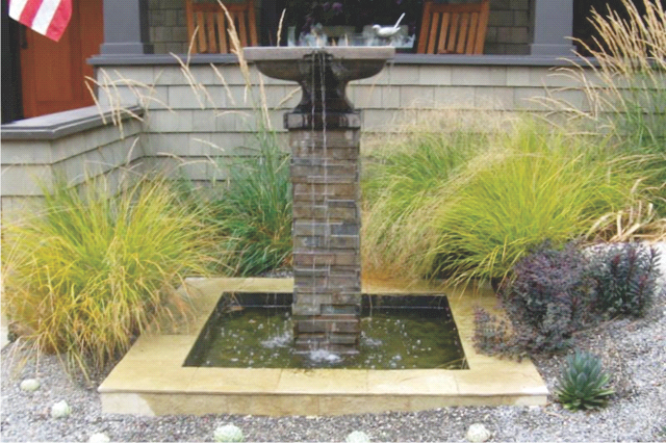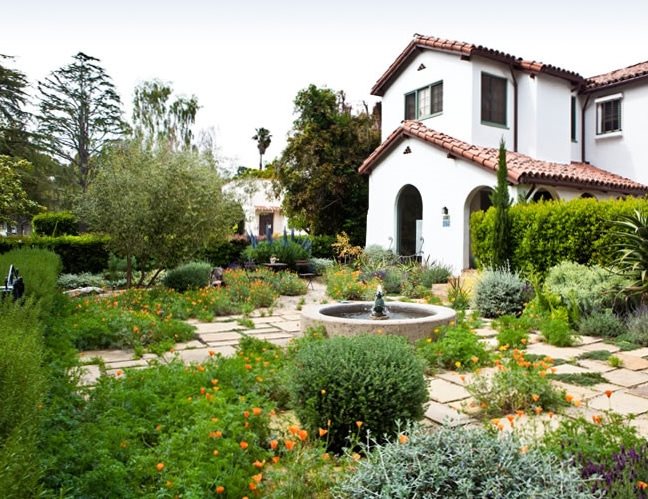Hilton Head Landscapes Fundamentals Explained
Hilton Head Landscapes Fundamentals Explained
Blog Article
The 5-Minute Rule for Hilton Head Landscapes
Table of ContentsThe Hilton Head Landscapes IdeasThe Ultimate Guide To Hilton Head LandscapesThe 7-Second Trick For Hilton Head LandscapesHow Hilton Head Landscapes can Save You Time, Stress, and Money.Excitement About Hilton Head LandscapesThe 7-Second Trick For Hilton Head Landscapes9 Simple Techniques For Hilton Head LandscapesThe smart Trick of Hilton Head Landscapes That Nobody is Discussing
Type compatibility is likewise a major part of unity in designone or 2 strikingly various kinds benefit comparison and emphasis, yet normally all various other forms need to have some resemblances for an unified appearance. Appearance describes exactly how rugged or fine the surface area of the plant or hardscape material really feels and/or looks.
Examples of plants with coarse appearance consist of philodendrons, agaves, bromeliads, hollies, hands, and hydrangeas. Features that produce fine appearance consist of little vegetation; slim, strappy fallen leaves (yards) or high, thin stems; little, dense twigs and tiny branches; long stems (vines); and little, fragile flowers.
Not known Details About Hilton Head Landscapes
Many plants are average texture, in that they can not be described as having either coarse or fine structure. They are defined by medium-sized fallen leaves with simple shapes and smooth sides. The average-sized branches are not densely spaced neither commonly spaced, and the general kind is commonly rounded or mounding. Medium-textured plants act as a background to web link and unify the coarse- and fine-textured plants.

To make a space feel smaller sized, place the rugged appearances along the outer boundary and the great appearances closest to the viewer. The detail of the rugged appearance makes the plants appear closer and makes the area really feel smaller sized. The perceived structure of plants can also change with the distance from the plant.
Unknown Facts About Hilton Head Landscapes
Strong colors increase the comparison and make the appearance appear coarser, while low-key shades can flatten appearance. Hardscape with a crude texturesuch as really harsh rocks and vibrant, big timberstends to make all plant material appear much more medium textured. Developers frequently develop a texture research (Number 8) theoretically to assist make a decision the plan of plant materials.
Figure 8. Appearance research. Shade in plant material and hardscape includes rate of interest and range to the landscape. Color is one of the most noticeable element in the landscape and is generally the emphasis of many property owners; however, it is additionally the most temporary element, normally lasting just a couple of weeks a year for specific plants.
Hilton Head Landscapes Things To Know Before You Buy
A straightforward description of the color wheel consists of the three key colors of red, blue, and yellow; the three secondary colors (a mix of two primaries) of green, orange, and violet; and 6 tertiary colors (a mix of one nearby main and second shade), such as red-orange. Shade theory discusses the relationship of colors to every various other and just how they should be made use of in a make-up.

Comparable (in some cases called unified) shade plans are any three to 5 shades that are adjacent on the color wheel, such as red, red-orange, orange, yellow-orange, and yellow, or blue, blue-violet, and violet (Landscapers near me). The shades are relevant to each other since they generally include 2 primaries blended to form a secondary and two tertiary colors, which implies they share typical residential or commercial properties
They have a tendency to have high contrast between them. One of the most typical collections are violet and yellow, red and eco-friendly, and blue and orange. Corresponding shades are often located normally in blossoms; an usual set is yellow and violet. Shade is discovered in the blossoms, foliage, bark, and fruit of plants.
3 Easy Facts About Hilton Head Landscapes Explained
Green vegetation in all its different shades is the leading color by amount, however various other shades capture focus quicker as a result of their high contrast to the color environment-friendly. Shade is likewise found in structures, rocks, pavers, timber, and furnishings. Most shades in all-natural materials, such as rock and wood, are usually low-key and have a tendency to be variations of brownish, tan, and light yellow.
Color is an important component for creating rate of interest and selection in the landscape. Shades have buildings that can affect emotions, spatial assumption, light quality, balance, and focus. One residential or commercial property of color is explained about temperaturecolors seem amazing or warm and can impact feelings or sensations. Great colors tend to be soothing and must be utilized in locations for leisure and calmness.
The smart Trick of Hilton Head Landscapes That Nobody is Talking About
The "temperature" of colors can additionally influence the understanding of distance. Amazing colors tend to decline and are viewed as being farther away, making a room really feel larger. Warm shades have a tendency to advance and are perceived as being more detailed, making an area feel smaller sized. Color can also be made use of to catch attention and straight views.
For example, intense yellow, which has the greatest intensity, likewise has a high contrast with all various other colors (commonly called a "pop" of color) and must be conserved. A small amount of extreme color has as much visual weight as a huge amount of a much more restrained or weaker shade.
Comparable (in some cases called unified) color design are any kind of three to 5 colors that are nearby on the shade wheel, such as red, red-orange, orange, yellow-orange, and yellow, or blue, blue-violet, and violet. The colors are associated per various other since they typically include 2 primaries mixed to create a second and two tertiary shades, which suggests they share common residential or commercial properties.
Rumored Buzz on Hilton Head Landscapes
Complementary shades are frequently discovered naturally in blossoms; an usual set is yellow and violet. Color is located in the flowers, vegetation, bark, and fruit of plants.
Green foliage in all its various shades is the dominant shade by amount, but various other shades catch interest quicker because of their high contrast to the color green - landscapers in bluffton sc - https://sketchfab.com/h1tnhdlndscps. Shade is likewise discovered in structures, rocks, pavers, timber, and furniture. A lot of colors in natural materials, such as stone and wood, are normally soft and often tend to be variations of brownish, tan, and light yellow
Excitement About Hilton Head Landscapes
Shade is a vital component for producing interest and range in the landscape. Colors have residential or commercial properties that can affect emotions, spatial assumption, light quality, balance, and emphasis. One residential property of color is explained about temperaturecolors show up to be great or warm and can impact emotions or feelings. Trendy shades often tend to be relaxing and ought to be made use of in areas for leisure and peacefulness.
The "temperature" of shades can also affect the understanding of range. Amazing colors have a tendency to recede and are perceived as being further away, making a room feel bigger. Cozy shades have a tendency to breakthrough and are regarded as being more detailed, making next page a space really feel smaller. Shade can also be used to catch focus and straight views.
As an example, intense yellow, which has the greatest intensity, also has a high contrast with all other shades (frequently referred to as a "pop" of shade) and must be used sparingly. A percentage of extreme shade has as much aesthetic weight as a huge amount of a much more controlled or weaker color.
Report this page